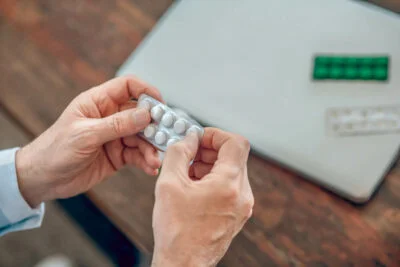
How Long Do Opioids Stay In Your System?
Legacy Healing Center Blog
Anyone who has used these powerful medications, whether for legitimate medical reasons or due to misuse, must know how long opioids stay in their system. Doctors often prescribe opioids for pain relief, but they also carry a high potential for dependency and misuse. Knowing how long opioids remain detectable in the body can offer insight into the risks associated with their use and why recovery support may be necessary for those struggling with dependency. At Legacy Healing Center, we’re committed to providing effective resources for those affected by opioid use, including safe detox options and supportive recovery programs. Our addiction specialists discuss how different opioids impact the body, detection times, and ways to find support for addiction recovery.
Opioids and Their Effects
Opioids––including morphine, oxycodone, fentanyl, heroin, and methadone––are a class of drugs primarily prescribed for pain relief. These substances bind to receptors in the brain, reducing pain and often creating feelings of relaxation or euphoria. While opioids are effective for managing pain, their effects on the brain can lead to physical dependency and addiction if used improperly or over an extended period.
Recognizing the signs of opioid addiction is essential for early intervention. These signs may include increased tolerance (needing higher doses for the same effect), intense cravings, withdrawal symptoms when not using, and changes in behavior such as social withdrawal or neglecting responsibilities. Misusing opioids can quickly lead to severe health consequences, highlighting the importance of monitoring usage and understanding detection times in the body. These effects also make it necessary for users to be informed about how long these drugs can stay in their systems.
How Long Do They Stay in Your Body?
The amount of time opioids stay in your system depends on several factors, including the type of opioid, the frequency and amount used, and the individual’s metabolism. Each opioid has a different half-life, which determines how long it remains detectable in the body. Here is a breakdown of detection windows for various types of opioids across different testing methods:
- Short-acting opioids (e.g., morphine and heroin) are typically detectable for shorter periods. For example:
- Urine: Up to 3-4 days for occasional use, up to 7-21 days for frequent use.
- Blood: Detectable up to 24 hours after last use.
- Saliva: Can be found 1-4 days post-use.
- Hair: Detectable for up to 90 days.
- Long-acting opioids (e.g., methadone and fentanyl) tend to stay in the system longer due to their extended release. Detection times vary based on the frequency and method of use:
- Urine: May be detected for 5-7 days, possibly longer with chronic use
- Blood: Typically detected up to 48 hours
- Saliva: Detectable for up to a week in some cases
- Hair: Remains in hair follicles for up to 90 days
These detection times are essential for anyone interested in how long drugs stay in your system, especially for those who may be concerned about a scheduled opioid drug test. Various factors, such as metabolism, body weight, hydration level, and overall health, can also affect how long opioids remain detectable. Understanding these timelines is vital not only for personal awareness but for medical treatment planning as well, especially for those considering or undergoing opioid addiction recovery.
Why Is It Important to Know How Long Drugs Remain in the Body?
Many people question how long opioids stay in your system for two main reasons: either they’re preparing for a drug test or seeking insight into their own opioid use patterns. It’s common for individuals to look up detection times to try and learn how to pass a drug test, whether for employment, legal reasons, or personal concerns.
However, if you’re frequently wondering about detection times or relying on opioids regularly, this might indicate a deeper issue. Opioid misuse can have severe consequences, and understanding the detection windows is just one part of addressing the broader issue of dependency. If you’re concerned about your opioid use, consider whether you may benefit from support, especially if you’re experiencing any signs of addiction, such as intense cravings, difficulty reducing use, or withdrawal symptoms.
Legacy Healing Center Can Help
At Legacy Healing Center, we provide a structured path to recovery, beginning with detox and continuing through comprehensive therapy and aftercare support. Our opioid detox program is often the first step, offering a safe environment to manage withdrawal symptoms under professional supervision. Detox helps clear opioids from the body while minimizing discomfort, setting a stable foundation for further treatment.
Following detox, clients transition into additional levels of rehab care, which include counseling, group therapy, and holistic approaches that address the mental, emotional, and physical aspects of opioid addiction. These therapy programs equip individuals with the tools and support needed for long-term recovery.
For those who need continued support after treatment, our aftercare services offer resources and guidance to help maintain sobriety and adjust to daily life without opioids. Aftercare provides ongoing assistance and a connection to a supportive recovery community, helping individuals stay on track and thrive in their new lifestyle.
If you or a loved one is struggling with opioid use and searching, know that Legacy Healing Center is here to help every step of the way. We understand the challenges of recovery; we aim to provide the guidance, support, and care you need. From detox to ongoing therapy and aftercare, we’re committed to creating a safe, supportive environment where individuals can begin and sustain their journey to a healthier, substance-free life. Contact us today to learn more about our programs and take the first step toward a brighter future.
Related Readings:
